Scottish shortbread cookies are so easy to make, using just three basic ingredients. There are many variations of these classic butter cookies, and they can also be used as a crust for pies and bars. Make a batch today!
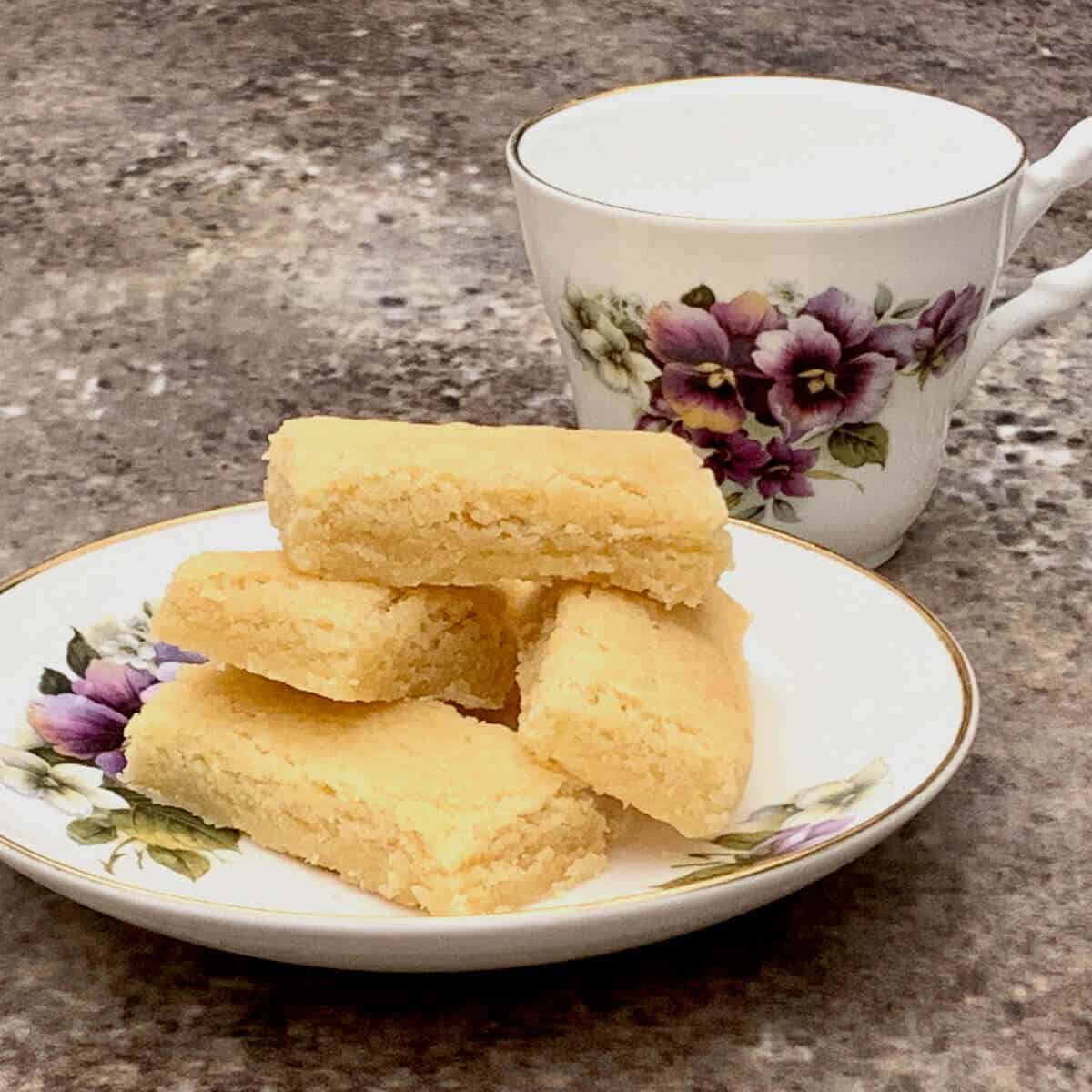
Jump to:
[August, 2019: I've reworked the recipe and updated this post with all new pictures. Enjoy!]
Why this recipe works
- Only three ingredients needed
- Rich, buttery flavor and a soft, tender texture
- A versatile cookie that can also be a base for bar cookies and slab pies
What comes to mind when you think about shortbread cookies?
For me, shortbread is so associated with Scotland, red tartan boxes automatically come to mind. Walkers Shortbread is the gold standard of commercially made Scottish shortbread, and they even did a tie-in with Outlander.
And while Walkers is a very good product, homemade shortbread cookies are actually incredibly easy to make, using only three ingredients!
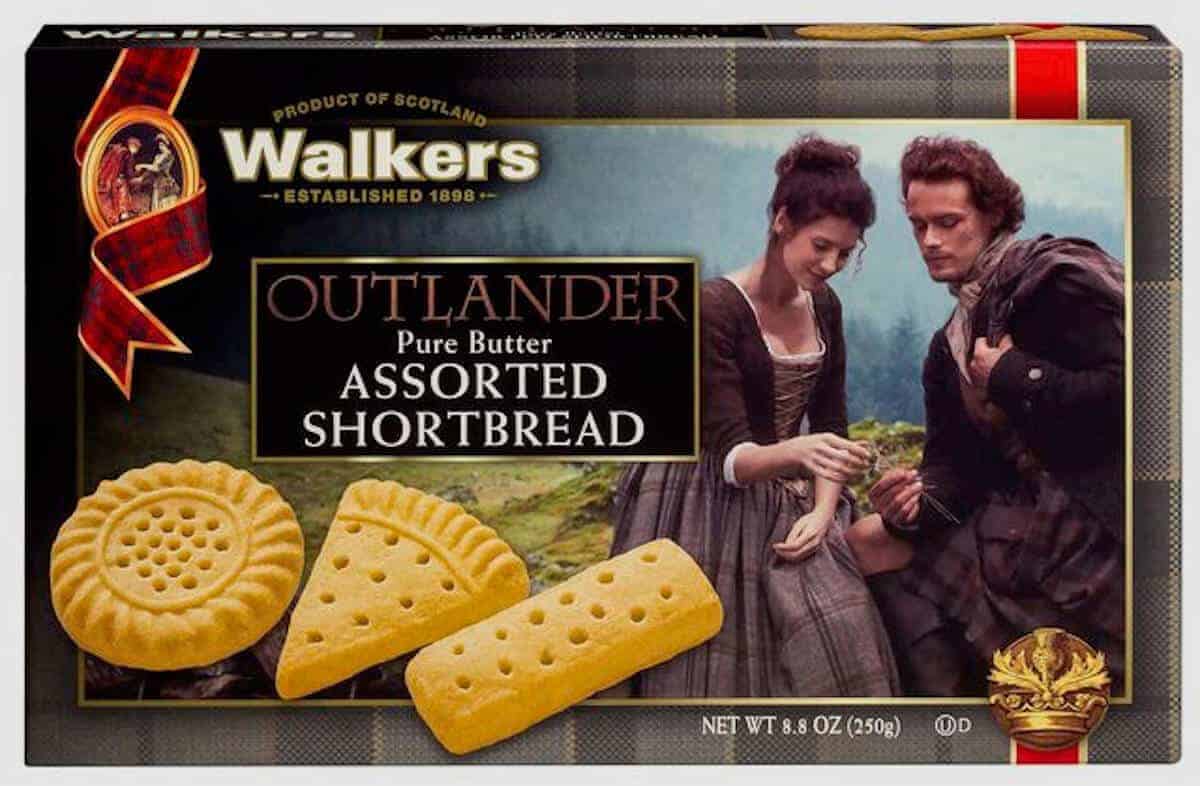
Recipe Ingredients
You'll need the following ingredients to make this Scottish shortbread recipe:
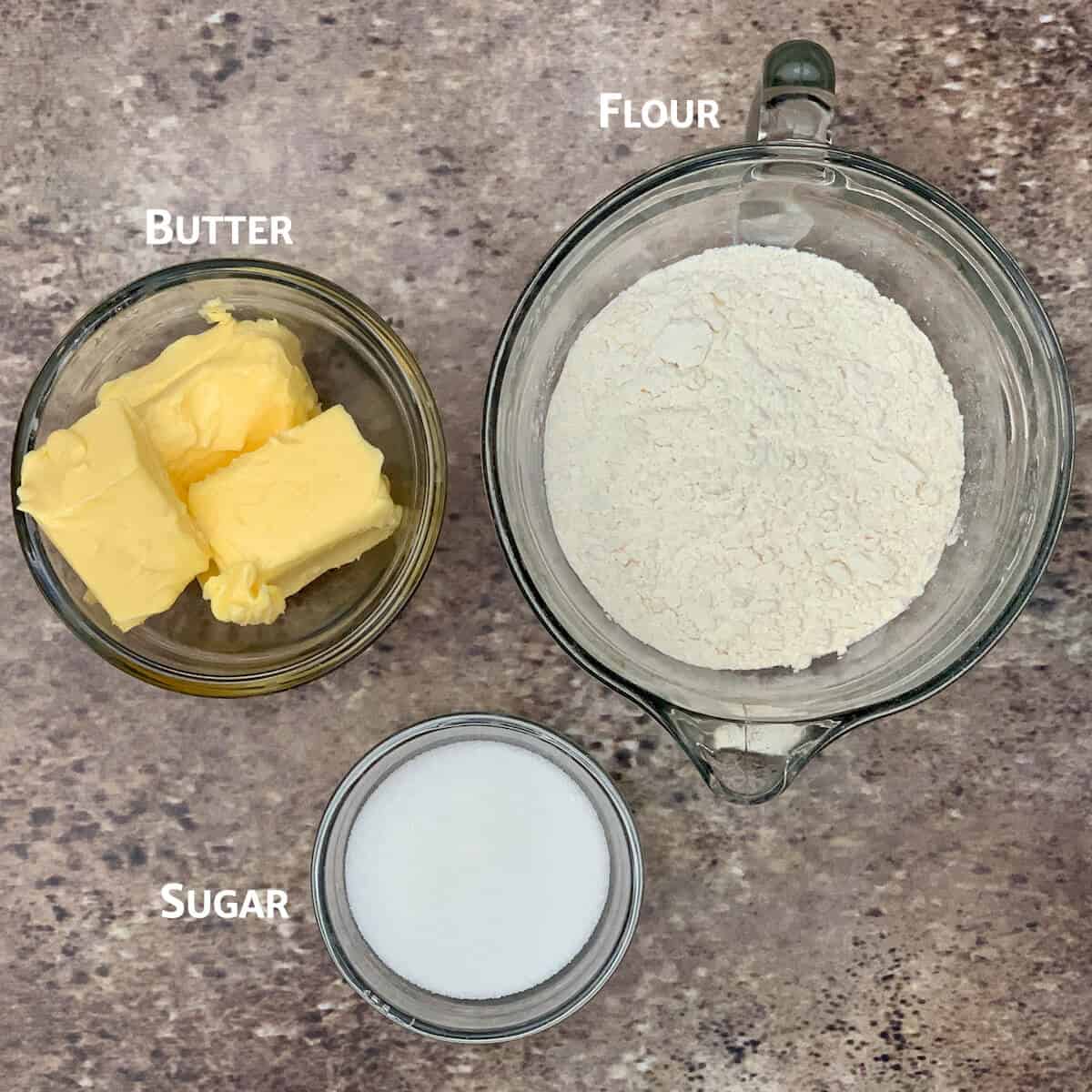
Ingredient Notes
There are only three main ingredients to make these Scottish butter cookies: flour, butter, and sugar.
I've written a separate post about why is shortbread called shortbread and a bit of its history. In that post there’s made mention of two interesting trivia tidbits: (a) the 3 : 2 : 1 recipe ratio of 3 parts flour, 2 parts butter, and 1 part sugar (by weight), and (b) altering the cookie's texture using other ingredients.
There are many different versions of the flour : fat : sugar ratios in shortbread recipes, and how soft, sweet, or buttery the results are varies considerably. Interesting, considering that you'd think only having three ingredients wouldn't leave much wriggle room. This shortbread cookie recipe has slightly more sugar (2 tablespoons), and about ¼ cup more butter than the recipe ratio would suggest. No wonder my shortbread is buttery goodness!
Butter: Because butter features prominently in the recipe, used the best butter available - the richer the butter, the better the flavor of the shortbread will be.
Salt: I keep saying there are only three ingredients in a Scottish shortbread recipe, and that's true, up to a point.
There's an assumption that you'll be using salted butter. If you're using unsalted butter you have to...say it with me now...add salt (specifically ½ to ¾ teaspoon of salt, depending on how salty you prefer the shortbread).
Why does the recipe assume salted butter is being used? Remember that the original recipe was first written in the early 18th century, and presumably made even before that. Salt was used to keep butter fresher longer without the need for refrigeration.
Nowadays, most bakers use unsalted butter so we can control the amount of salt in the dish. Use either kind of butter you'd like, but add salt if needed.
Cornstarch: Some recipes use cornstarch (aka corn flour) or rice flour for some of the all-purpose flour. This gives the shortbread cookies a softer texture. I don't find it necessary, but that's up to you.
Flavorings: Shortbread can be flavored with extracts like vanilla, almond, Fiori di Sicilia (an orange vanilla extract), or have mix-ins like lemon zest or lavender buds. For our purposes today, we're sticking with a traditional shortbread recipe, no additions.
See the recipe card for a full list of ingredients and measurements.
How to make Scottish shortbread
Step 1: Make the shortbread dough
There are two different ways to make the shortbread dough.
One technique mixes the flour and sugar together, then cuts in the butter, like if you were making scones (before adding cream, that is).
The other creams the butter and sugar together (photo 1), then adds in the flour (photo 2).
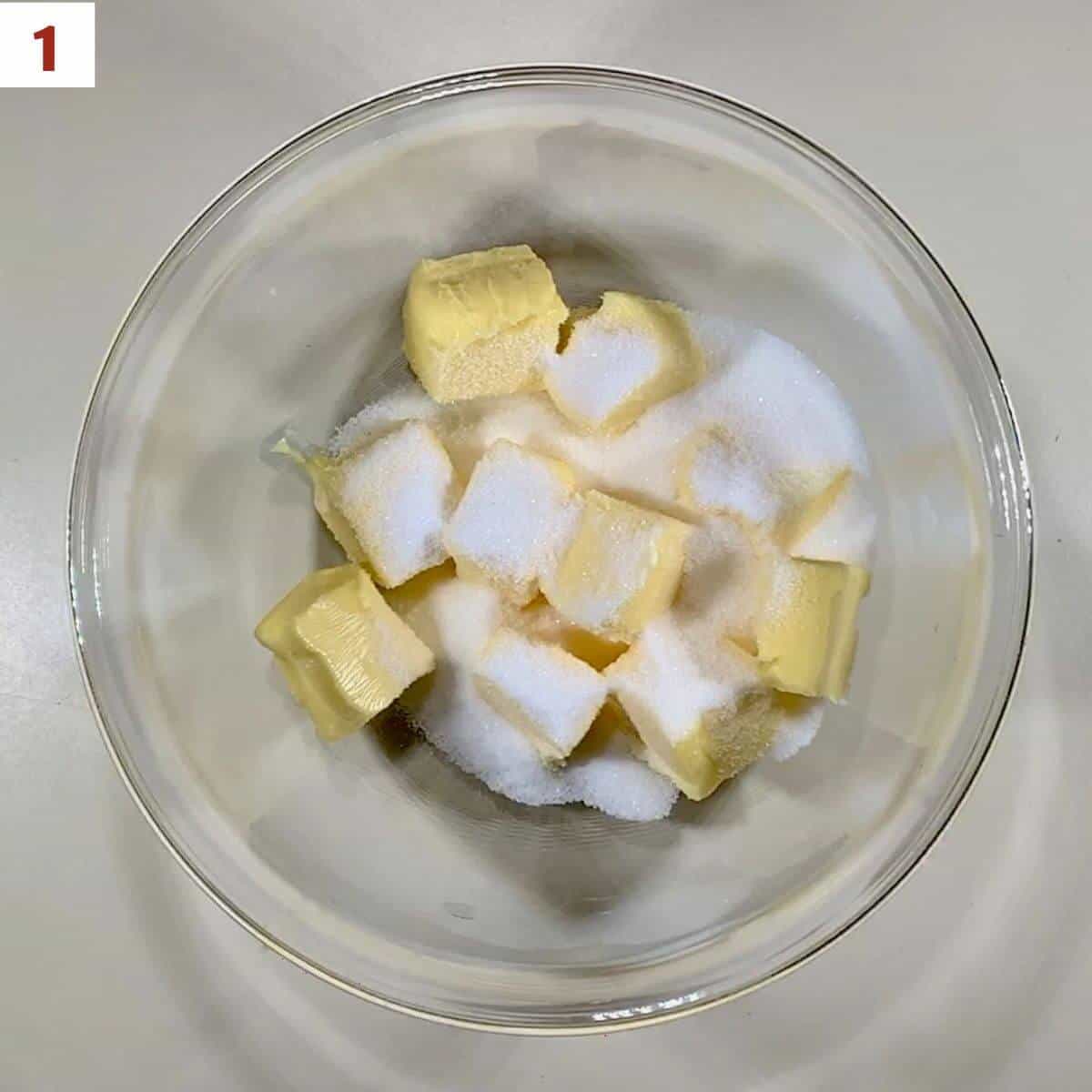
I like the latter method more for the simple reason that it's less work by hand. Let the mixer to the job!
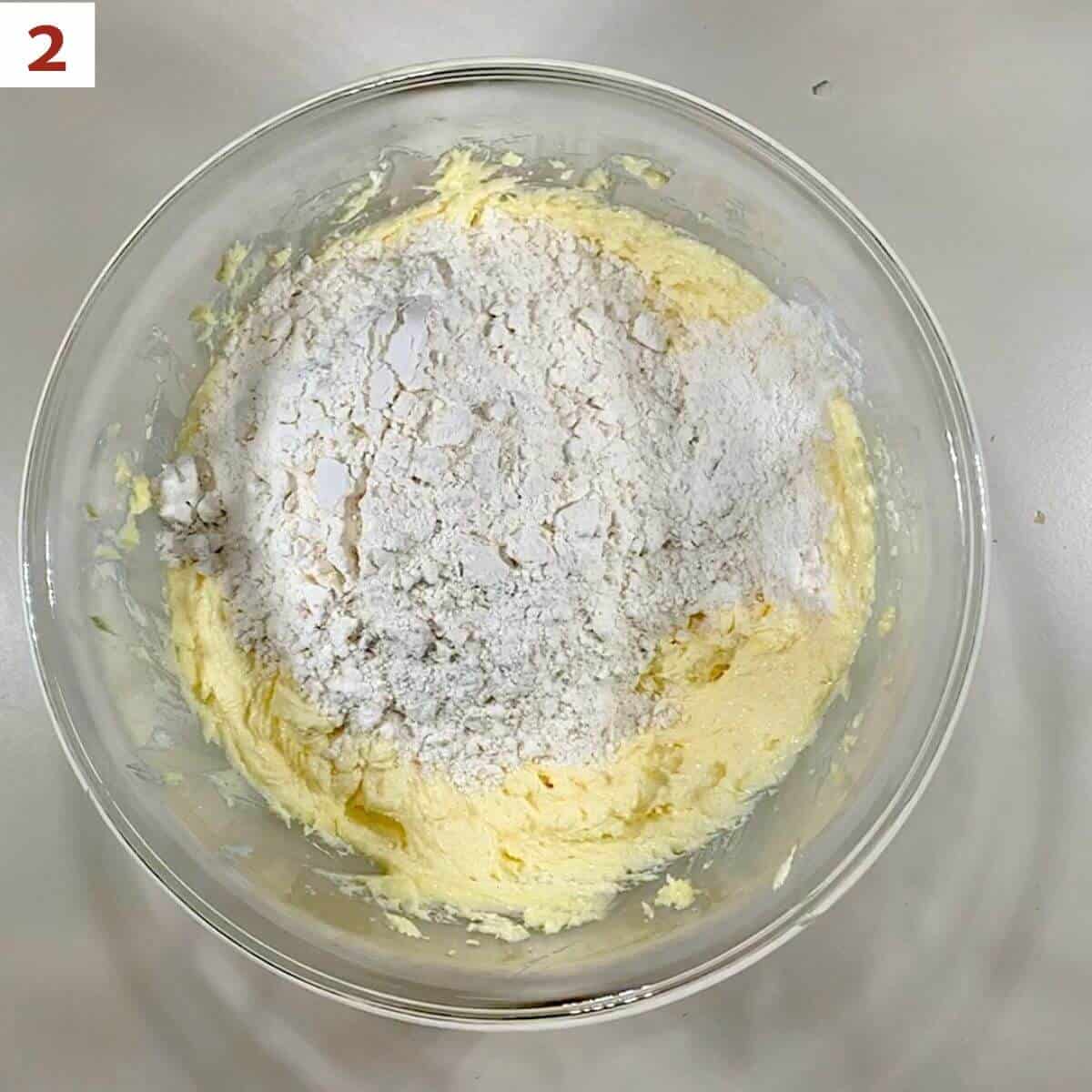
Step 2: Transfer dough to pan
Press the dough in a 9- x 9-inch baking pan, smoothing it out as evenly as possible, then pick the dough with a fork (photo 3).
I cover my dough with plastic wrap and start by using my hands, then use a pie pan roller to get the dough as even as possible.
Chilling the dough while the oven preheats gives the butter time to firm up so the resulting shortbread is nice and tender.
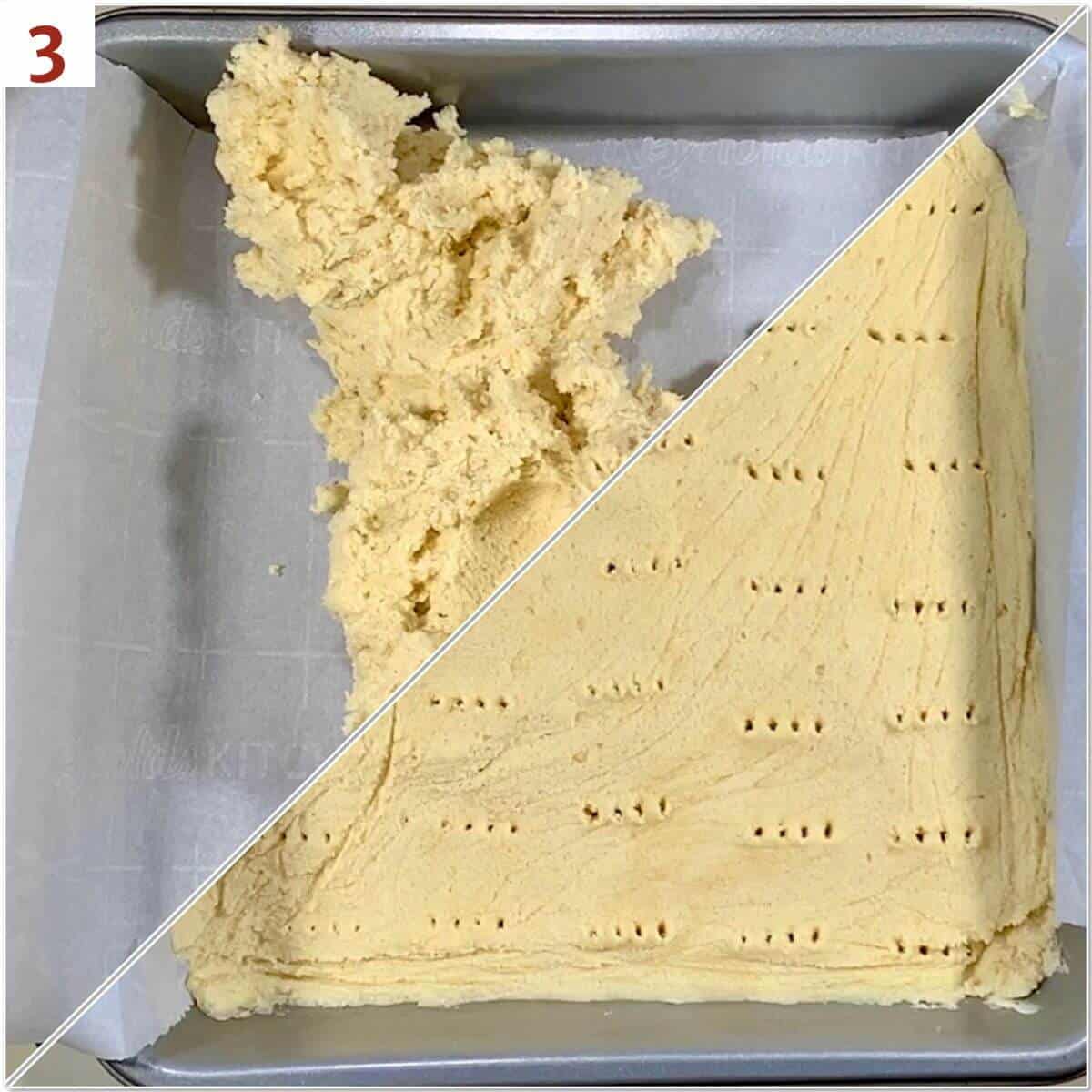
Step 3: Bake and portion the shortbread
The shortbread bakes 25 to 30 minutes. It's best to cut the shortbread into squares or bars when it first comes out of the oven. The dough will be soft and forgiving (photo 4).
If you wait until the shortbread cools before you cut it, you'll have a lot of crumbs to contend with.
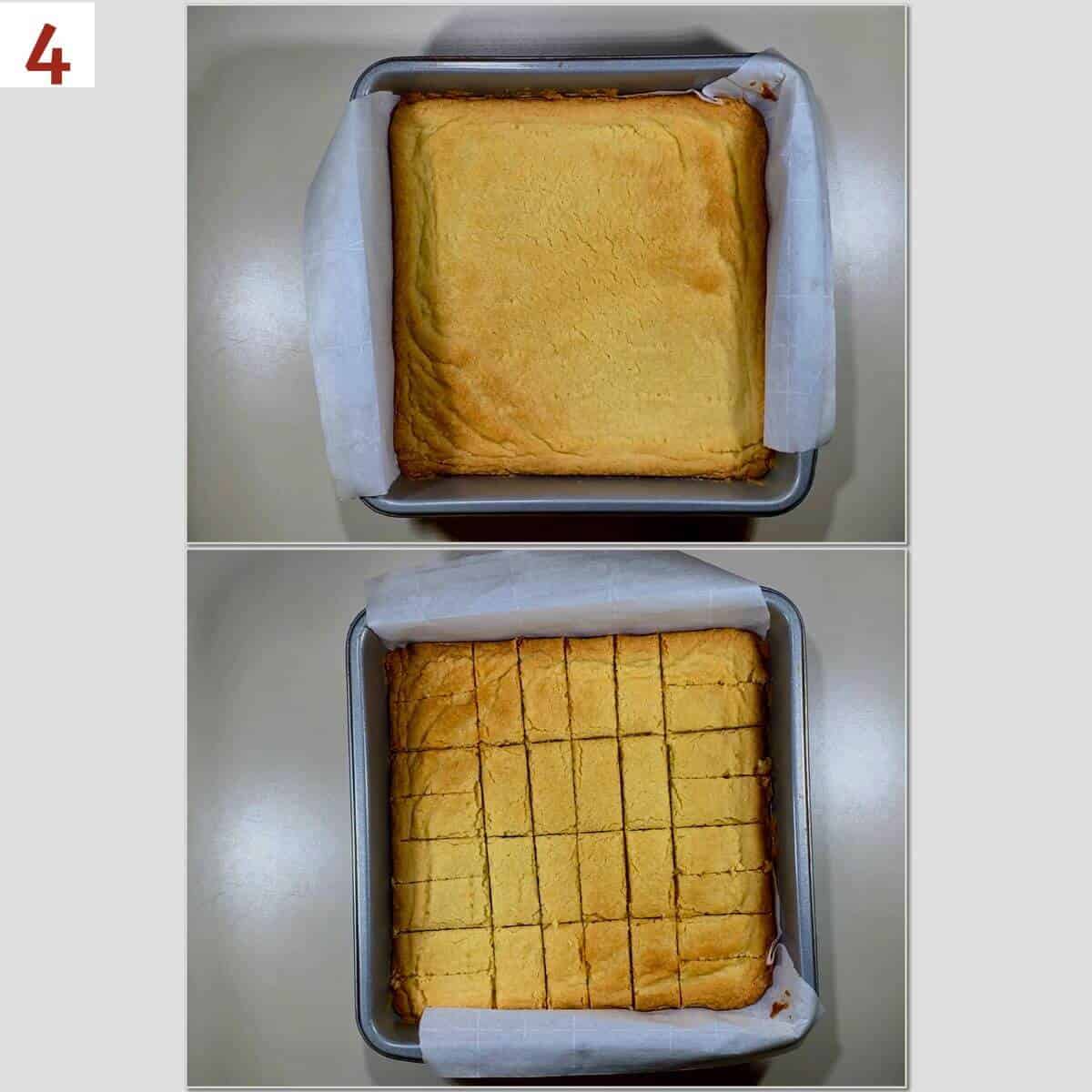
Storage instructions
Shortbread cookies can be kept in an airtight contain at room temperature for up to 3 days, or in the refrigerator for up to a week. You can also freeze the baked cookies for up to 3 months, placed in an airtight freezer container. Thaw overnight in the refrigerator or at room temperature.
Yield Notes
If you prefer a thicker and softer shortbread, bake the dough in an 8- x 8-inch baking pan. You will still get 32 pieces.
You can also be double the recipe and bake it in a 9- x 13-inch baking pan for 30 to 35 minutes. This will yield about 54 pieces.
Questions asked and answered
Here are some questions you might have...
Some recipes add cornstarch to the dough, which helps to make the gluten in the flour "shorter." Other recipes call for powdered sugar (which contains cornstarch) for the same reason. However, butter also can shorten the gluten, and since my recipe has a higher butter ratio to flour than most, there's no need for cornstarch here.
The main difference is that shortbread doesn't use leavening, like baking powder or baking soda. It relies on the high butter content to keep the cookie soft by shortening the gluten in the dough.
You poke holes in shortbread for the same reason as docking a pie crust. There's a lot of butter in the dough, and as it bakes it releases steam. Since you want the cookies to be nice and flat, poking holes allows the steam to escape so the shortbread bakes up flat and even.
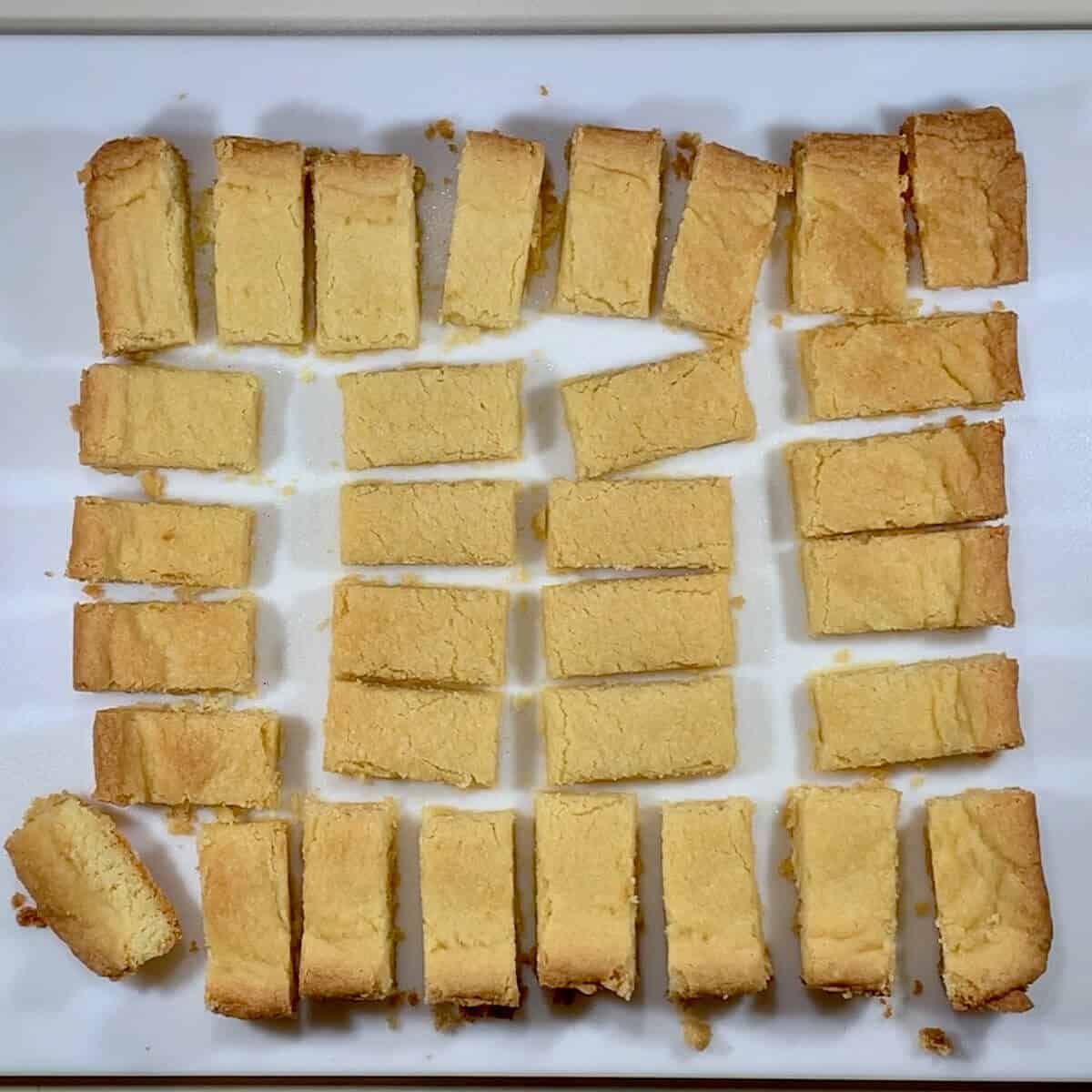
The many uses of shortbread cookies
Shortbread is a very versatile cookie. It's like the vanilla ice cream of the cookie world. Make a plain dough, or flavor it with different add-ins like lemon zest, almond extract, or essence of lavender. Maybe substitute brown sugar for the white sugar for a richer flavor.
You can use a shortbread recipe to make shaped cookies using cookie cutters, like these Easy Christmas Cut Out Cookies. I've even made savory shortbread with garlic powder and parmesan cheese (yes, I omitted the sugar).
Shortbread is also commonly used as a base for pies and bars. You don't think about it, it's just there. Think lemon bars (or maybe Mint Lemon Lime bars?). Most pies that use a pastry crust can also be turned into pie bars (aka slab pies). Pecan bars and Brown Sugar Pie bars come to mind.
Crumbled up, shortbread can be used as a topping or as a mix-in. You can sprinkle it onto the whipped cream garnish for Brown Sugar Pie, or use in a trifle instead of pound cake, like in this Strawberry Trifle.
Think of the possibilities!
Buttery soft goodness
This Scottish shortbread recipe produces cookies that are rich and buttery, with a soft and crumbly texture. They're perfect for snacking by themselves, and are a wonderful addition to afternoon tea.
You can even dip them in tempered chocolate to fancy them up a bit!
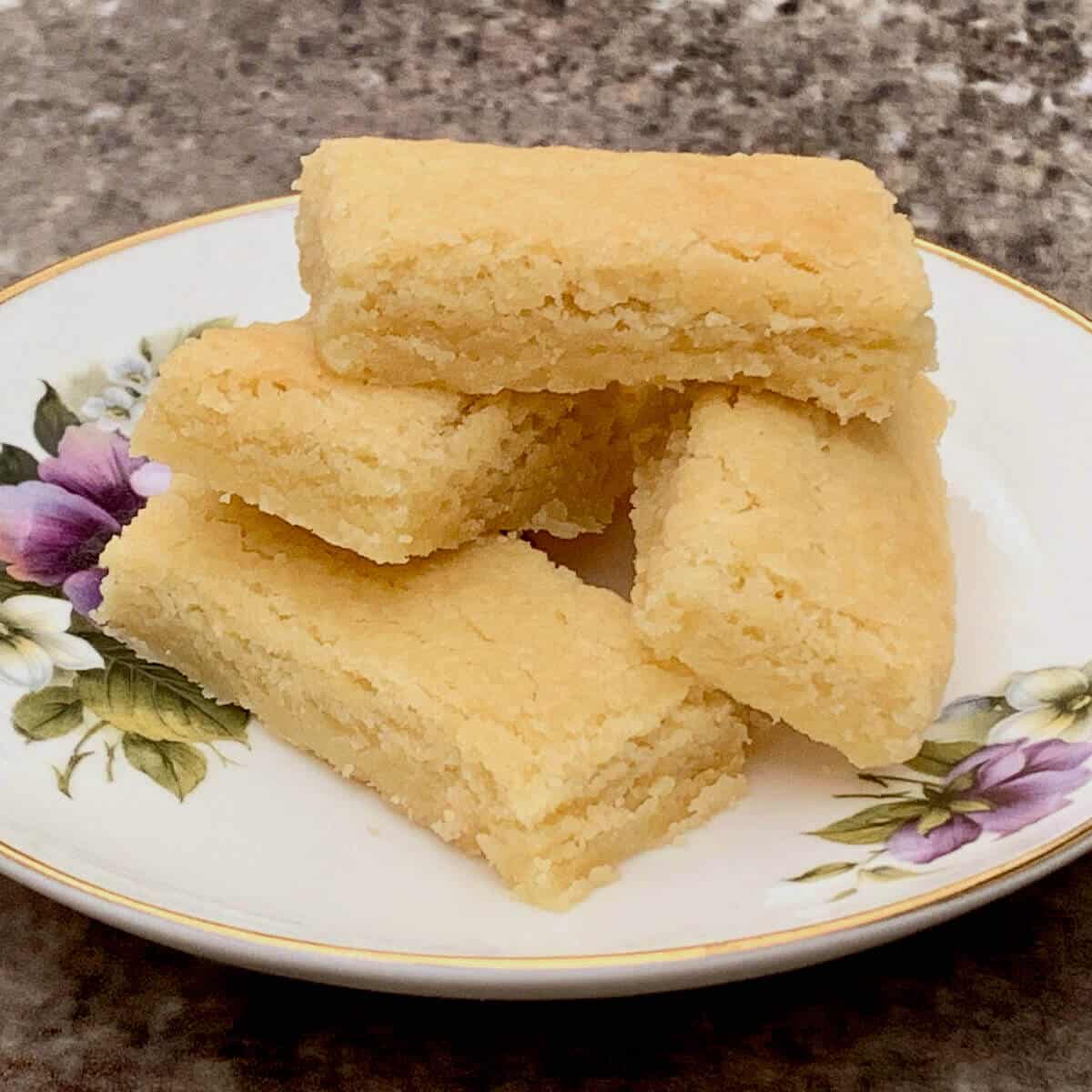
Whenever I have a craving for a cookie that doesn't take too much effort, I make a batch of classic shortbread. They're easy, tasty, and really fun to play with variations.
These traditional Scottish shortbread cookies might have short in its name, but it’s big in flavor!
More recipes featuring shortbread crusts to try
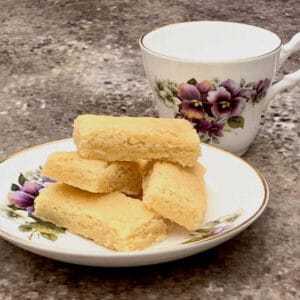
Traditional Scottish Shortbread Cookies
Equipment
Ingredients
- 1 cup butter, salted or unsalted, softened, see Recipe Notes
- ½ cup granulated sugar
- 2 cups all-purpose flour
- ½ to ¾ teaspoon kosher salt, if using unsalted butter, see Recipe Notes
Instructions
- Preheat the oven to 350 °F. Line a 9- x 9-inch baking pan with parchment paper, leaving an overhang on two sides. Set aside.
- In the bowl of a stand mixer (or just a large bowl if using a hand mixer), beat the butter and sugar until smooth.
- Add the flour (and salt, if needed), and mix until a smooth dough forms.
- Pat the dough into the prepared baking pan. Using plastic wrap and a pie pan roller helps get everything even without making too much of a mess. Pierce the dough with a fork, then chill for 20 to 30 minutes, or until the dough is firm.
- Bake the shortbread for 25 to 30 minutes or until lightly browned. Remove from the oven to a wire rack.
- Cut the shortbread into 1- x 2-inch bars while it's still warm in the pan. Cool the pan on a wire rack for 15 minutes.
- Carefully remove the shortbread from the pan using the parchment paper overhang to the wire rack. Cool completely & enjoy!
- Storage instructions: Shortbread cookies can be kept in an airtight contain at room temperature for up to 3 days, or in the refrigerator for up to a week. You can also freeze the baked cookies for up to 3 months, placed in an airtight freezer container. Thaw overnight in the refrigerator or at room temperature.

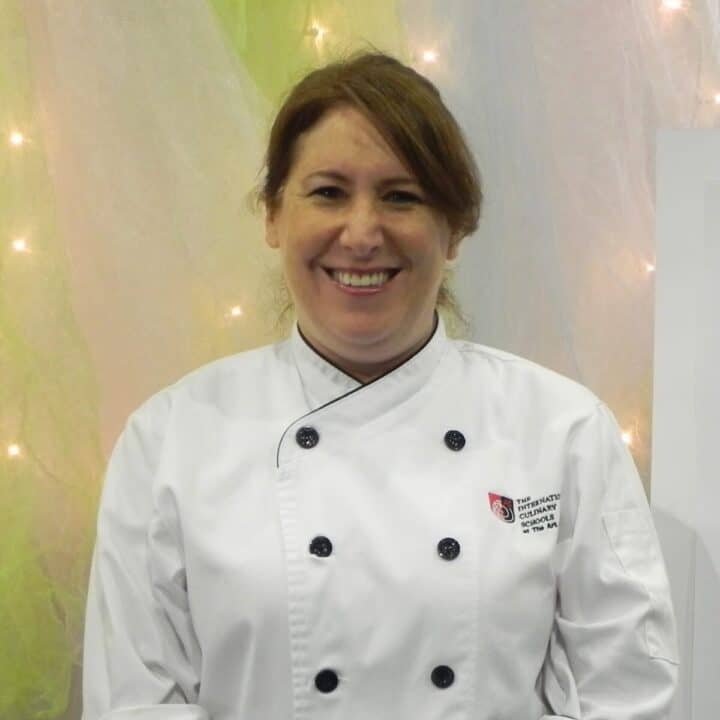
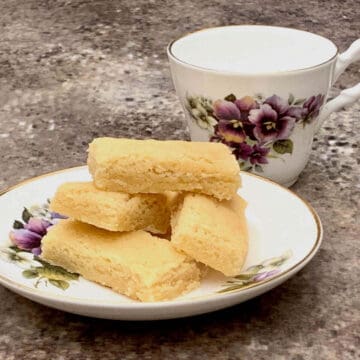


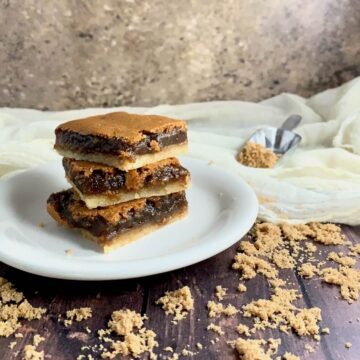
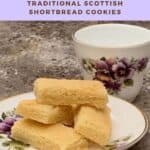
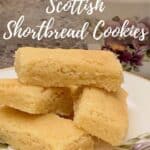
Alma Liss says
Loved your recipe and your article!
scotchscones says
Thank you!
Steve C says
What am I missing here? The standard recipe calls for a 9 x 9 baking pan (81 sq in). But doubling it calls for a 9 x 13 pan (117 sq in). Why wouldn't I need a pan that renders approximately 160 sq in?
Tammy Spencer says
Hi Steve, Thanks for your question - as a math lover I appreciate your thoroughness. The difference would be that the 9- x 13-inch pan would yield a slightly thicker shortbread as compared to the 9- x 9-inch pan, but that’s the largest baking pan I have. You could of course use a larger pan with sides (like a half sheet baking pan), but that would yield a shortbread more suitable as a crust for a layer cookie (like my Brown Sugar Pie Bars). If you want the same thickness in the larger pan, increase the dough amounts by 50%. Happy baking! 😉
Linda says
Sinfully good and way too easy to make quick when the sweet tooth is roaring!
My 17 yr old grandson even makes them when he wants a treat.
Tammy Spencer says
Thanks for the nice comment, Linda! Happy baking 🙂